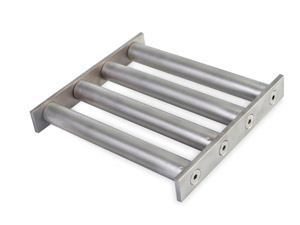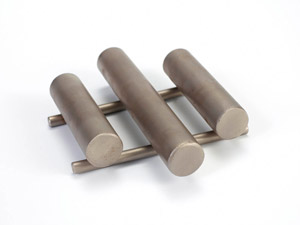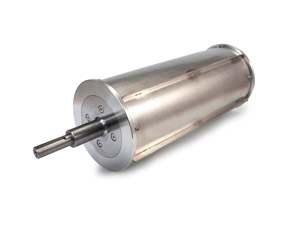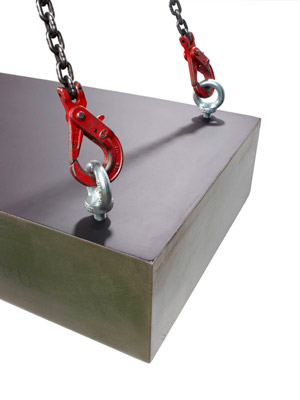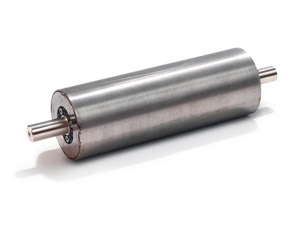Why do electromagnets get hot?
What's the reason the electromagnets heat up?
Unlike ordinary magnets, electromagnets heat
up. These man made devices do everything a magnet can do and much more. They
are particularly useful because it is possible to make them have any desired
field strength and become stronger or weaker or even turned off.
Basically, electromagnets are coils of wire wrapped around a metal core, which in turn are connected to a battery. Although they are easy to make, they can have a problem with overheating if given more voltage than their wires can withstand. Fortunately, with careful design, this problem can be avoided.
What to do when the electromagnets heat up?
As mentioned, it is possible to avoid heating
of electromagnets. To do this, you can multiply the diameter of the
electromagnets, i.e. the distance from one side of the coil to the other, by
3.14. Then, multiply this figure by the number of turns on the coil you are
using.
This will give you the length of cable your
electromagnet will use. If you measured the diameter in inches, the length will
then be in inches. If the measurement was in centimeters, the length will be in
centimeters.
Then, dwell the wire gauge resistance chart
and select a random wire gauge. Look at how many ohms of resistance the wire
gauge has per foot, meter, or your chosen unit of measure. Multiply this by the
length of cable your electromagnet will require. The resulting figure will be
the number of ohms of resistance your wire will have in that meter.
Next, divide the voltage of the battery you
intend to use by the resistance of the cable you are considering. The result
will be the current that will flow in that cable when it is connected.
You can compare this figure to the maximum
current rating for that caliber wire on the current rating wire gauge chart. If
the current your electromagnet will draw is greater than the maximum for which
the meter is rated, do the calculations again, but with a smaller gauge wire.
The lower the gauge, the wider the cable and
the more current it can carry. Repeat this process until you find a meter that
safely transmits the current your device will produce without overheating.
You have to keep in mind that:
Do electromagnets heat up every time they are
used?
Generally speaking, yes. Electromagnets are in
many of the everyday objects that we hadn't even noticed could have one inside.
Among their most frequent uses, and in which their presence could not be
replaced by any other element, are electric motors, which usually heats the
electromagnet very frequently.
There is a diversity of uses for electromagnets in the industrial sector, as well as in robotics. Electromagnets are also used to lift heavy weights of metals such as in scrapyards.
To clarify all your doubts about why electromagnets heat up, at IMA we help you choose the type of magnet that best suits your needs. If you have any doubt, ask us.
Knowing the
properties of ferrite magnets
Ferrite Magnets and all their properties
Ferrite magnets are permanently attached and
have good mechanical properties that allow them to be cut into different shapes
and sizes. These magnets are cut with diamond tools, while standard drills and
wire spark erosion techniques do not work because they are electrically
insulating.
This occurs because the current does not pass
through them due to their extremely high electrical resistance, characteristic
from which they are known by their other name: ceramic magnets.
Ferrite magnets are manufactured by wet or dry
pressing and sometimes by extrusion. Wet pressing provides stronger magnetic
properties, e.g. C8 ferrite. Dry pressing provides better dimensional
tolerances, such as C5 ferrite.
In addition, the magnets are sintered to fuse
the powder and then processed to the final shape. The extrusion method can be
applied to produce arc segment shapes that are then cut lengthwise. Sometimes
new tools are required to produce ferrite magnets if existing tools do not
allow the desired shape to be produced. Typical tolerances for ferrite magnets
are +/- 0.25 mm, although +/- 3% is also used.
Improve heat resistance
When ferrite magnets heat up, their high
intrinsic coercivity really improves (improving demagnetization resistance)
making them extremely popular in motor and generator designs.
In fact, the use of ferrite magnets in
loudspeaker applications is very common, precisely because only these types of
permanent magnets become noticeably more resistant to demagnetization when
heated.
Ferrite magnets have a positive temperature coefficient
of intrinsic coercivity (it changes in +0.27% / degrees C with respect to the
environment) and only ferrite expresses this characteristic that much. However,
the magnetic output drops with temperature (it has a negative induction
temperature coefficient of -0.2% / ambient degC). The end result is that
ferrite magnets, or ceramic magnets, can be used at high temperatures with very
few problems.
Ferrite magnets can be used up to +250 degrees
C (and in some cases up to +300 degrees C), making them ideal for use in
electrical machines and most high temperature applications. At sub-zero
temperatures, for example, less than -10 to -20 degrees Celsius, ferrite
magnets may begin to show reduced tensile strength. That is, the temperature
and degree of attenuation depends on the shape of the magnet and are
application specific. In most applications, the operating temperature is not
low enough for this effect to occur.
This is because if its temperature coefficient
of +0.27% / degrees C of intrinsic Coercivity - the Hci drops as the magnet
cools. The ferrite can demagnetize if placed in a too cold environment, but it
is the total design of the magnetic circuit that determines how cold the magnet
must be before any impairement is noticed.
Characteristics and uses of ferrite magnets
Among the main features of ferrite magnets is the fact that it is possible to cut them without losing magnetism, while they can be used in a number of applications, including:
If you have doubts between buying a neodymium magnet or ferrite magnets, at IMA we help you choose the type of magnet that best suits your needs. If you have any questions, please ask us.
Applications of electromagnets in
industrial robotics
Electromagnets in industrial robotics are very commonly used, especially in the last decade. They are often mounted on robotic tools used to lift ferromagnetic materials, such as steel sheets or scrap metal. Another commonly used industrial component is the inductive proximity sensor, which is used to detect if a metal object is close to the sensor.
These
two components are sometimes used together and sometimes as parts of robotic
tools, where the sensor is used to detect the object that the electromagnet
will lift. This configuration gives the combined tool a distinct advantage over
a similar tool, but without sensors, in that it can compensate for changes in
its environment. It can be used, for example, to compensate for individual
tolerances when working with a large number of objects.
When
we talk about the abundance of electromagnets in industrial robotics, we mean
that they are present in robotic arms used in a factory environment for
manufacturing applications. Traditional industrial robots can be classified
according to different criteria, such as the type of movement (degrees of
freedom), an application (manufacturing process), an architecture (serial or
parallel) and a brand. Then, there is also a new qualifier for industrial
robots that may or may not be collaborative.
What kind of robots have electromagnets in them?
Electromagnets
are in all of the industrial robots mentioned above and there is a wide variety
of them. For example, a painting robot will require a small payload of
electromagnets but a large range of motion and will be explosion-proof. On the
other hand, an assembly robot will have a small work space but it will be very
precise and fast, so it requires more attention in working loads with
electromagnets. Depending on the target application, the industrial robot will
not only have a specific type of movement, but also the use of electromagnets
in industrial robotics is used in different ways.
But
one important thing to keep in mind is that, in addition to electromagnets, in
robotics there is also the use of permanent magnets because of their difference
with electromagnets, especially to secure components in the ground. In this
way, the industry saves energy consumption and receives more strength at the
time of underwriting for issues related to size and weight.
In
some cases, electromagnets in industrial robotics are used to control industry
remotely, but this requires a large magnet, which consumes a considerable
amount of energy, so it is not as common, at least not as much as the use of
electromagnets in robotic arms.
Advantages of using electromagnets in industrial robotics
Among
the advantages that the use of electromagnets has in industrial robotics, it is
worth highlighting the fact that the applications can be switched on and off,
according to the needs.
The
coils of electromagnets are generally made of copper wire, because copper is an
excellent conductor of electricity.
Other applications of
electromagnets in industrial robotics
Electromagnets in
industrial robotics also have the following applications:
An electric bell. The electromagnets make the hammer vibrate from side to side, ringing the bell.
At IMA we offer our customers different types of magnets, whether neodymium, ferrite, samarium, alnico or plastic, but also some models of electromagnets, among which we highlight the circular, rectangular and drive electromagnets.
Differences between a Neodymium magnet and a Samarium magnet
When
deciding to buy a type of magnet we must know the use we are going to give it.
That use will determine the purchase, choosing the magnet that best suits our
needs, since, as in everything, there are some magnets that will fit more than
others to a particular type of space. It is not the same to buy a magnet that
must withstand high temperatures than another that does not. Just as it is not
the same to do us with a magnet that we are going to use in exteriors that with
another one whose use is inside our house or work.
Neodymium magnets consist of a type of rare earth material, and we can indicate that it is a special material. If we combine it with iron or boron we can create the most powerful magnets today. On the other hand, due to its nickel and copper coating, it obtains a very beautiful surface of a silver colour, so that its use in interiors is perfectly compatible with home decoration. The clamping force is so powerful that it can be used in confined spaces. But as we
shall see, Samarian magnets also belong to the rare earth group and coincide in many things, although there are some, as we will see below, that make them different.
Samarium
Magnets are among the strongest and are mainly used in generators, electric
motors, sensors and measurement technology. In highly technological processes,
the samarium magnet is indispensable.
But
before continuing we must warn that the Samarium magnet is a special permanent magnet
and we must highlight its high performance. As already mentioned, Samarium
magnets belong to the rare earth family. Samarium, in combination with cobalt,
is an alloy used primarily in the production of permanent magnets.
A model of the most resistant magnet
Until
the mid-1970s, these magnets were mainly used when the energy density of
ferrite magnets was no longer sufficient. But while ferromagnetic magnets are
very susceptible to temperature, rare earth magnets reach operating limits of
up to 450°C. Just as these magnets have a high corrosion resistance.
Possibly,
corrosion is among the main differences between the two. The Samarium magnet,
even if uncoated, is highly resistant to corrosion and also to acids. In fact,
we can indicate that Neodymium magnets were invented in the mid-1980s as an
alternative to Samarium magnets. But its distrust of corrosion and the need to
be treated on its surface, clearly indicate the superiority in this aspect of
Samarium.
Today
Samarium magnets are mainly used in the motor industry. They can be found in
electric, direct current, linear and servo motors, as well as in brake
technology. Also in sensor technology.
In
general we can say that both rare earth magnets are very versatile. And some of
its properties such as flexibility, functionality and precision stand out,
which makes us able to give it almost unlimited uses. There are many fields of
application in which we can see your application.
Therefore
we can say that corrosion resistance is the main difference with the Neodymium
magnet. While both share many other characteristics such as energy density and
also the perfect use at high temperatures.
Maintenance, handling and care
of neodymium magnets
Neodymium magnets are made of a combination of iron, boron and neodymium and, to ensure their maintenance, handling and care, we must first know that these are the strongest magnets in the world and can be produced in various forms, such as discs, blocks, cubes, rings, bars and spheres.
The coating of neodymium magnets made of
nickel-copper-nickel gives them an attractive silver surface. Therefore, these
spectacular magnets serve perfectly as gifts for craftsmen, fanatics and
creators of models or products.
But
just as they have a powerful adhesive force and are capable of being produced
in miniature sizes, neodymium magnets require specific maintenance, handling
and care in order to keep them in optimum working order and avoid accidents.
In fact, following the following safety and use
guidelines could prevent potential injury to people and/or damage to your new
neodymium magnets, because they are not toys and should be treated as such.
Neodymium
magnets are the most powerful rare earth compound commercially available. If
not handled properly, especially when handling 2 or more magnets at once,
fingers and other parts of the body may be pinched. The powerful forces of attraction
can cause neodymium magnets to come together with great force and catch you by
surprise. Be aware of this and wear proper protective equipment when handling
and installing neodymium magnets.
As
mentioned, neodymium magnets are very strong and can cause physical injury,
while small magnets can pose a choking hazard. If ingested, the magnets can be
joined together through the intestinal walls and this requires immediate
medical attention because it can cause serious intestinal injury or death. Do
not treat neodymium magnets the same way as toy magnets and keep them away from
children and babies at all times.
Strong
magnetic fields can adversely affect pacemakers and other implanted medical
devices, although some implanted devices are equipped with a magnetic field
closure function. Avoid placing neodymium magnets near such devices at all
times.
Do
not machine or drill neodymium magnets, as neodymium powder is extremely
flammable and may present a fire hazard.
Avoid
placing neodymium magnets near magnetic media, such as credit/debit cards, ATM
cards, membership cards, discs and computer drives, cassette tapes, video
tapes, televisions, monitors and screens.
Although
most magnets have a neodymium disc protected by a steel pot, the neodymium
material itself is extremely fragile. Do not attempt to remove the magnetic
disk as it will probably break down. When handling multiple magnets, allowing
them to come together tightly can cause the magnet to rupture.
Neodymium
magnets come with a triple coating to mitigate corrosion. However, when used
underwater or outdoors in the presence of moisture, corrosion can occur over
time, which will degrade the magnetic force. Careful handling to avoid damage
to the coating will prolong the life of your neodymium magnets. To repel
moisture, keep your magnets and cutlery.
Do
not use neodymium magnets near extreme heat sources. For example, near a
rotisserie, or the engine compartment or near your car's exhaust system. The
operating temperature of a neodymium magnet depends on its shape, grade and
use, but may lose strength if exposed to extreme temperatures. The most common
grade magnets withstand temperatures of approximately 80 °C.
If
you want to know more about this subject, we invite you to know the uses of
neodymium magnets in a motor, as well as the industrial and technological
applications of neodymium magnets.
Applications of neodymium magnets in electric motors
Today, it is very common applications of neodymium
magnets in electric motors has increased considerably, especially due to the
growing demand that exists with electric cars in the global automotive market.
Neodymium magnets are permanent magnets produced from a
composition of neodymium, iron and boron. The material remains the strongest
type of rare earth permanent magnets currently available.
In fact, in the past it was safe to find neodymium
magnets in products such as hard drives, microphones, speakers, headphones and
magnetic bearings, among others, but now, neodymium magnets in electric motors
are even more common than they seem.
Electric motors and revolutionary new technologies are
at the forefront and magnets have a vital role to play in the future
of the world's industry and transport. Neodymium
magnets act as the
stator or part of a traditional electric
motor that does not move. The rotors,
the moving part, would be a moving electromagnetic
coupling that pulls the pods along the inside of the tube.
Neodymium magnets in the automotive industry
In all cars and in future designs, the amount of
electric motors and solenoids is well in double figures. They are found, for
example, in:
One of the most important
components in electric
motors are neodymium
magnets. The magnet is usually the static part of the
motor and provides the rejection power to create a circular or linear motion.
Neodymium magnets in electric motors have more
advantages than other types of magnets, especially in high performance motors or where reducing size is a crucial factor.
Bearing in mind that all new technologies aim at
reducing the overall size of the product, it is likely that these engines will
soon take over the whole market.
Neodymium magnets are increasingly used in the
automotive industry, and became the preferred option for designing new magnetic
applications for this sector.
New neodymium magnets in electric motors
So neodymium magnets are used in various types of motors, such as the high-performance motors found in electric vehicles, the use of which has increased rapidly. The automotive world has recently developed a new type of neodymium magnet, which uses significantly less neodymium and can be used in high temperature conditions.
This new type of magnet is useful for expanding the use
of engines in various areas such as automobiles and robotics, as well as for
maintaining a balance between supply and demand of valuable rare earth resources. The automotive industry,
however, is working
to further improve performance and evaluate
application in products while accelerating the development of mass production
technologies, with the goal of achieving adoption in all engines used for
various applications, including automobiles and robotics.
Why are neodymium magnets used in electric motors?
In electric motors, neodymium magnets perform better
when the motors are smaller and lighter. From the engine that spins a DVD disc to the wheels of a hybrid
car, neodymium magnets are used throughout the car.
A neodymium magnet with a low degree of coercivity may begin to lose strength if heated to more than 80°C. High coercitivity neodymium magnets have been developed to operate at temperatures up to 220°C, with little irreversible loss. The need for a low temperature coefficient in neodymium magnet applications has led to the development of several grades to meet specific operational requirements.
If you want to know the uses of neodymium
magnets in a motor, stay informed with the magnet world articles that IMA offers you.
Uses of magnets in the food sector
The food sector is one of the most advanced and industrialised sectors of all or, at least, so in the most industrialised countries of Europe and North America. The techniques that we see in other industries such as automotive assembly lines also have their application to the production lines of different food products of all kinds, from meat and fish to processed foods such as biscuits and chocolates.
In all these phases of the development of the production chain, one of the fundamental roles of this whole process is played by the magnets
used in the food sector.
Thus, we can see that there
are different types depending on the results sought, which is why in this
article we want to explain what each of them consist of and what are the exact
uses given to them.
It should be noted that the involvement of magnets in
the food sector goes back many decades and goes far beyond this short list;
they are found in almost every machine that is used during the treatment or
processing of food as a component. However, we want to highlight here the uses
that are given to the magnets in a particular way citing and explaining some of
the models of magnets for food that we have in our catalog.
Magnetic grids: These magnets from the food sector are used to purify any type of particle that may be found in foods of a granular or dusty nature, such as, for example, flour and rice. Thus, these magnetic grids can be placed in different parts of the production chain depending on what you are looking for, although normally these magnets in the food sector are located at the entrance of pipes, channels or hoppers eliminating any ferrous material that may be.
Magnetic filters: Like grills, magnetic filters have a very similar use, since their purpose is to filter magnetic impurities that may be at the exit of a conduit.
Magnetic drums: In the food industry, in addition to filters and devices responsible for eliminating or reducing impurities, magnetic drums also stand out; always responsible for protecting the different machines involved in food processing, packaging or treatment.
Special P.E.F. plate: This type of special magnet is widely used in the food industry. It is generally placed on a conveyor belt or on inclined channels to act better on the different products. In addition, this device is made with large ferrite magnets that produce a large magnetic field of great strength. These special P.E.F. plates are used above all in the protection of mills, rows and any type of machinery.
Magnetic rollers: This is perhaps the most well-known type of magnet in the food industry, as it has a very characteristic shape. Magnetic rollers are usually located in production lines and aim to remove iron particles that could circulate through it. In addition, these types of magnets, due to their high demand, come in a large number of different sizes and, in addition, can be ordered with specific measures to meet any type of special need.
As we can see, magnets are a fundamental part of the
food industry since they play a very important role in guaranteeing the
salubrity, hygiene and quality standards of food throughout the whole process.
Differences between a Samarium magnet and an Alnico magnet
Knowing the characteristics of both magnets and their main
features, their conditions and possibilities,
their disadvantages, will allow us to decide
for the use of one or the other according to our needs before deciding for
a specific type. In addition, we will be able to see during this article, the
main utilities that are being given to one and another type of magnet at the
present time.
Alnico Magnets
Alnico magnets consists mainly of aluminium, nickel and cobalt. This type of magnet, increasingly used and with characteristics that make it highly recommendable for certain actions and in certain sectors, has a high remnant induction. However, we must affirm that it has a low coercitivity.
Alnico's magnets have stability at extreme temperatures,
maintaining, even in the worst conditions, their characteristics and magnetization at temperatures between
-250ºC and 425ºC. The Alnico magnet has a high magnetic induction and we can see its use, above all, in measuring
devices and magnetic field detection systems.
However,
we must not forget that Alnico is a rather fragile material and can only be
handled during the casting process, not after this process, so it is not
manipulable once melted.
The orientation of the material
is carried out during the heat treatment, so that a magnetic field with the defined magnetization
direction can be achieved. The state and the way it behaves in the face of
oxidation is good.
Samarium Magnets
Samarium magnets, and also Neodymium magnets, are known as rare earth magnets and are, in all probability, the most advanced of the magnetic materials we have today.
Today they are the most powerful magnets on the market.
They have a high coercitivity and a high remanence, which allows to design new
models and their introduction in new fields for their application, above all,
in limited spaces, with little space, or where a high magnetic field is
necessary.
However, we must warn that the temperature can condition
us when using these magnets, although we have a wide range ranging from 200 º C
to 350 º C. These magnets do not present any oxidation problems either.
Moreover, we can say that these types of magnets have a high resistance to
corrosion. Cobalt-Samarium magnets withstand and operate at temperatures below 0°C.
Samarium Magnets are among the strongest and are mainly
used in generators, electric motors,
sensors and measurement technology. In highly technological processes, the samarium
magnet is indispensable. It is a special permanent magnet and we must
highlight its high performance.
As already mentioned, Samarium magnets belong to the
rare earth family. Samarium, in combination with cobalt, is an alloy used
primarily in the production of permanent magnets.
Today Samarium magnets are mainly used in the motor
industry. They can be found in electric, direct current, linear and servo motors,
as well as in brake technology. Also in sensor
technology.
In general we can say that both rare earth magnets are very versatile. And some of its properties such as flexibility,
functionality and precision stand out, which makes us able to give it almost
unlimited uses. There are many fields of application in which we can see your application.
For all this we can say that the resistance to
corrosion, as well as the density of energy and its perfect use at high
temperatures are its main characteristics and what makes it different from many
others.





